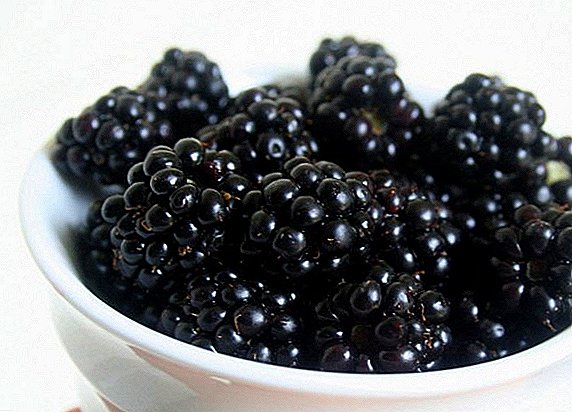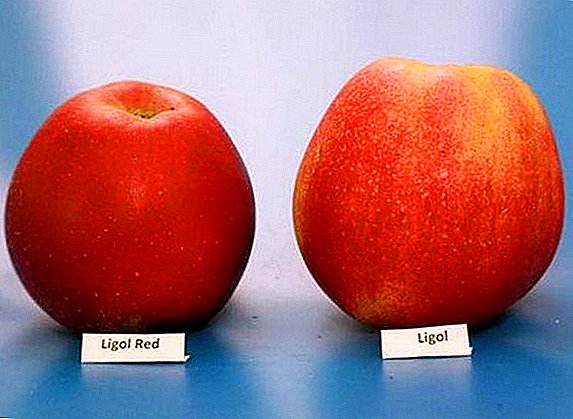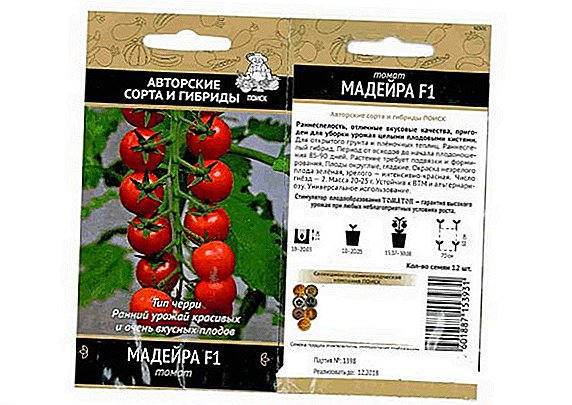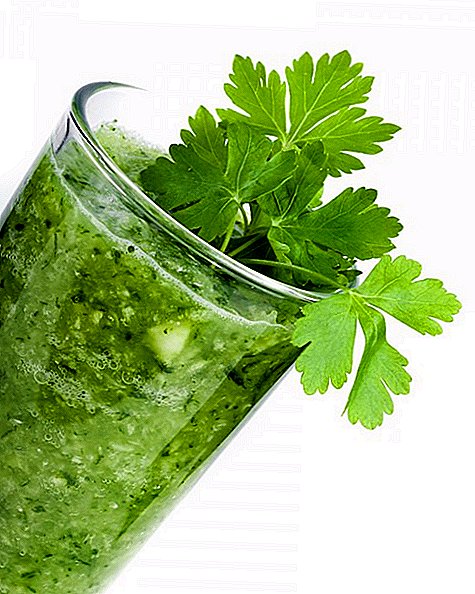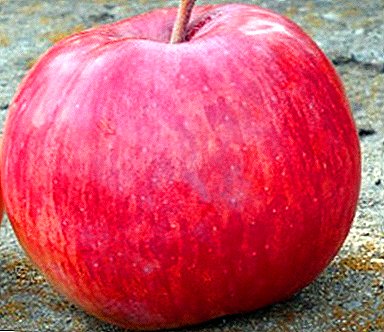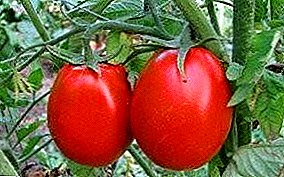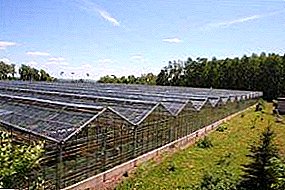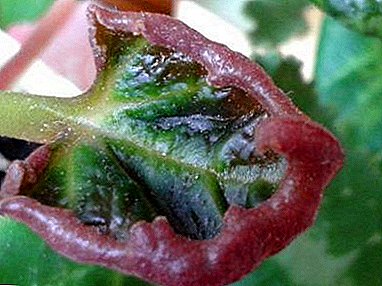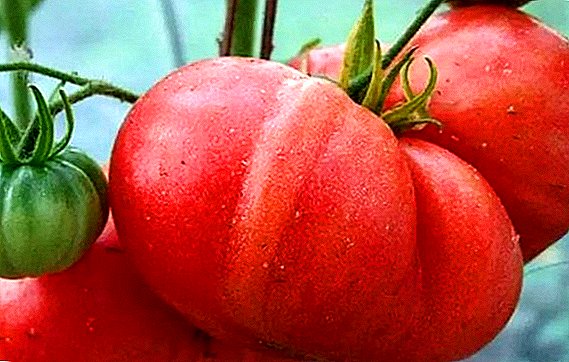 Tomato is a difficult plant to care for. To increase the yield of tomato and improve its adaptability to different climatic conditions, breeders derive all new varieties of this plant. They practice crossing, selection of hybrids, receive fruits with different characteristics. The most resistant to cold varieties that quickly gain mass, become the most popular. One of these varieties is a tomato called "Leningrad Giant". This article will discuss the main characteristics of the Leningrad fruits, the necessary conditions for growing this variety in domestic conditions and in the open field, as well as recommendations on the choice of seedlings and the basis of crop storage.
Tomato is a difficult plant to care for. To increase the yield of tomato and improve its adaptability to different climatic conditions, breeders derive all new varieties of this plant. They practice crossing, selection of hybrids, receive fruits with different characteristics. The most resistant to cold varieties that quickly gain mass, become the most popular. One of these varieties is a tomato called "Leningrad Giant". This article will discuss the main characteristics of the Leningrad fruits, the necessary conditions for growing this variety in domestic conditions and in the open field, as well as recommendations on the choice of seedlings and the basis of crop storage.
Variety description
A typical plant is a shrub above the average, up to 70 cm tall. Branch weak, compact, not spreading. The root system is represented by a rod, fragile, branched (up to 2 m in diameter). 
Aerial roots appear on the lower parts of the main stem, so the variety is easily propagated by cuttings. The leaves are large and carved, but not symmetrical. During flowering a brush of light yellow small flowers appears on the stem, which are capable of self-pollinating.
At the end of the flowering period, the rudiments of the fruit appear on the multi-crown brush.
Compared to other varieties, this variety is precocious, favorably distinguished by unpretentiousness.
To early tomato varieties include such as "Siberian early", "Riddle", "Mongolian dwarf", "Kiss of geranium", "Balcony miracle."
It is relatively easy to tolerate drought, the fruit pulp has a pronounced sugary texture, which gives the fruit properties of the dessert.
Differs in the increased productivity and the large size of berries on rather low bushes. The disadvantages usually include the appearance of cracks on the skin in both rainy and dry seasons due to the rapid growth of berries. 
Important! If you irrigate the tomatoes by the method of irrigation in hot weather, water drops will work like lenses, and brown burns will appear on the leaves of the tomato bushes. To avoid this, water the bushes of tomatoes at the root and do it only in the evening or early morning time.
Fruit characteristics and yield
The phase of final ripeness begins 80-90 days after the completion of seedling formation. The average weight of one berry is 400 g. The yield is high: in one season from 1 square meter. m with moderate care can collect up to 10 kg of tomatoes.
Fruits have a characteristic flattened-rounded shape and pronounced ribbing. They have a rich green color with an extensive dark green spot on the stem. As it ripens, the fruit changes color from green to bright pink, sometimes with light streaks.
Peel these tomatoes have a smooth. The flesh is juicy, fleshy, sweet with a fine-grained structure. 
Selection of seedlings
When choosing seedlings, first of all pay attention to the container in which the seedlings are presented. If the rhizomes are packed in simple bags, the plants will take a long and difficult time to take root due to microdamages of the rhizome.
Choose seedlings planted in separate peat cups or a medium-sized box with the ground - such plants will take root faster. Buy plants of approximately the same size and age to get the simultaneous formation and ripening of berries.
Rassad should be no more than two months. In two-month seedlings, the stem reaches the thickness of a pencil, the leaves of medium size have a rich green color. The leaves on the stem should be not less than 9 and not more than 12.
Examine the bottom side of the leaflets. It should be clean, without larvae and eggs of pests. Too curled down tips and brown spots on the leaves and the stem indicate excessive fertilizing of seedlings with nitrogen fertilizers. 
Did you know? There are two equivalent names for this amazing fruit - tomato and tomato. These names originated in different languages. "Tomato" - the word of Aztec origin. It originally sounded like a tomato. The word "tomato" came to us from sunny Italy. In translation, it means "golden apple".
Soil and fertilizer
First of all, the soil for the "Leningrad giant" should be loose, saturated with oxygen, good to pass moisture. You definitely will not fit a cold or clay soil. The soil in which water stagnates, or the one that has increased acidity, will harm tomatoes.
The best solution for growing outdoors is to use areas where nettle and alfalfa have been growing for the last three years. If you do not have such land, carrot, zucchini or cabbage plots will fit. This variety should not be planted where potatoes grew last year.
Suitable for planting soil with a neutral or alkaline pH. Before you plant on the beds of seedlings, let them chickens. They loosen the top layer of soil and pick out the larvae and eggs of parasitic insects. 
If you do not have poultry, process the soil with boiling water (3 liters per 1 square meter). Mix in equal proportions of river sand, ash and peat. Spread the mixture over the surface of the soil at the rate of 2 kg of the mixture per 1 square meter.
The next day, dig up the plot and loosen it with a rake. A week before planting seedlings re-process the beds with boiling water and cover them with a thick film.
Begin to make mineral fertilizers on the tenth day after the transplanting. There are two particularly useful fertilizers. This is potassium monophosphate and calcium nitrate. Saltpeter prevents the appearance of rot on the bushes.
It is applied to the soil twice - just before flowering and two or three days before the formation of ovaries (10 g of fertilizer per 10 liters of water). 
Monophosphate contributes to the accumulation of sugar in the fruit and improve their keeping quality after harvest. He also warns the appearance of cracks on the skin, which is especially important for the "Leningrad giant."
To prepare the mixture for irrigation, add 15 g of monophosphate to 10 liters of water. You can make it three or four times per season with intervals of 15-20 days.
Important! If you find a Medvedka on your plot, inspect all tomato bushes and the surrounding area, manually collect and destroy all pests and their larvae. Medvedka spoils not only the fruits. It digs deep tunnels under the tomato bushes and thus damages the root system.
Growing conditions
It is a thermophilic and light-loving culture that does not tolerate shading and excess moisture. Intense sunlight significantly accelerates crop formation. The optimum air humidity for the "Leningrad giant" is 50-60%, the soil moisture is 60-70%, with minimal water retention after irrigation. 
The best temperature for growing seedlings and fruit formation is + 23-25 ° С. At lower and higher temperatures, growth stops, and at + 34 ° C, the plant begins to wither.
Growing from seed to seedlings at home
Seedlings, pre-grown in pots, has a high resistance to adverse weather conditions and gives greater yield compared with seeds planted in open soil.
Learn how to sow and grow tomato seedlings, when you can sow tomatoes for seedlings, how to grow tomato seedlings in a snail, than to feed tomato seedlings.
Seed preparation
Tomato seed material is very fine, so it is sorted with saline. To a glass of water make 1 tsp. salt, pour in the same seeds, mix the solution well and leave to stand for ten minutes. 
Light floated seeds are removed, the solution is filtered through a sieve. Healthy heavy seeds remain on the sieve. They are washed under running water, evenly laid out on a piece of clean gauze cloth and laid out in a warm place to dry (2-3 days). Then carry out disinfection.
Prepare a weak solution of potassium permanganate, the seeds are folded into a small, wide container and filled with a solution for 15-20 minutes.
To improve the germination of seeds, they are soaked for a day in a special nutrient medium. As a nutrient medium, you can use the juice of potatoes or aloe, as well as special industrial solutions that are sold in gardening stores and at spring fairs.
After a day, the solution is drained, and the seeds are dried at room temperature without washing. Before sowing, the seeds are germinated for two days on moistened with water cosmetic discs or filter paper. 
Humidity during germination support constant, so that the seeds do not dry out. The temperature should be within + 22-25 ° С.
Did you know? After tomatoes became known in the civilized world, they were considered to be inedible poisonous fruits for a long time. Many curious cases are known when bribed high-ranking chefs tried to poison their masters with dishes with the addition of tomatoes. So, the victim of the "tomato plot" was George Washington himself. It is rumored that the president is "poisoned" had a very taste.
Content and location
Germinated seeds are sown in the prepared soil mixture. This may be a primer purchased at a special store, or a mixture prepared at home. To prepare the mixture independently, peat and humus are taken in equal proportions.
10 g of this mixture add 10 g of ash and 7 g of superphosphate. The soil mass is thoroughly mixed. The mixture should be infused for a week. Before sowing, the mixture is distributed in plastic containers with a layer thickness of 10-12 cm. 
Seed planting process
Planting of seed material is carried out in one day in order to ensure equal development conditions for all sprouts. Before planting the soil in containers slightly tamped and loosen the top layer.
The soil is watered with a solution of salt of humic acid (the color of the solution should be saturated brown). Grooves are made on the soil surface with a gap of six centimeters and a depth of 1.5 cm each.
Seed material is sown in the grooves every 1.5 cm. The grooves are sprinkled with the same soil mixture, the soil is slightly tamped.
The containers are covered with a thick film and put on a warm sunny windowsill. The optimum growing temperature is + 25-28 ° С, humidity - 90%. To maintain this level of moisture, the soil is regularly irrigated with a spray bottle. 
Seedling care
Healthy seedlings should appear three days after sowing, if they are kept at a temperature not lower than + 25 ° C. The main condition for the normal growth of seedlings is a large amount of light.
If the day is short, it is necessary to illuminate the seedlings with fluorescent lamps so that the total irradiation period is at least 12 hours per day.
Important! As soon as the fruits start to gain weight, tie the whole brush to the support so that the stem does not break under the weight of heavy berries and the crop is not lost.
Humidity in containers lower gradually, turning off a film on three-four additional centimeters every day. Young shoots are equally harmed by drought and excessive watering. Water the seedlings under the root, so as not to damage the weak stems, as the upper layer dries. 
Start hardening plants on the first sunny day. Take out the seedling containers to the balcony with the windows open and leave them for 5-7 minutes. Longer exposure to the sun can cause leaf burns. Repeat this hardening every day, gradually increasing the time spent on the air up to an hour.
In addition to hardening shoots need feeding. Starting to make organic fertilizers need two weeks after sprouting sprouts.
As an organic fertilizer, you can use straw, whey, potato peel, egg shells, banana skins.
For this purpose, suitable gumin and biohumus, which can be bought in specialized stores.
To safely feed sprouts, take a third of the dose indicated on the package. 
Pick sprouts spend three weeks after germination. Although tomatoes tolerate a picking well, handle them carefully. In order not to damage the root system, transfer the sprouts from the common container to the cups together with the earthy clod on the rhizome.
For the first transplant, use cups of peat with a capacity of 200-300 ml. The second time transfer the seedlings into pots of 1 liter each. Sprouts from cups do not reach, they will decompose in the soil after watering and will be a good fertilizer for growing stems.
Transplanting seedlings to ground
It is necessary to begin transplanting in one and a half-two months after sowing. At this age, seedlings begin to throw away the first flower brushes. Delayed transplantation in open ground is fraught with a decrease in yield. The optimal landing period is the beginning of April.
At this time of the year, the possibility of the return of frost, which are destructive for young sprouts, is excluded. Three days before transplanting, water the seedlings liberally. Do not wet the earth any more, so that it is easily separated from the pot along with the germ. 
Did you know? A common misconception that tomatoes are poisonous, managed to nip in the bud a retired American colonel named Johnson. In 1822, he ate a bucket of tomatoes in front of a shocked crowd of onlookers. While more than two thousand spectators argued why the colonel did not fall in mortal agony, Johnson calmly took his leave and went to his home. Since then, the fruits of tomato began to rapidly gain popularity as a dessert berry and a decent component of vegetable salads and stews.
Choose a transplant overcast wet day. Conditionally break the prepared bed into squares with a side of 40 cm and dig a hole for seedlings in the corners of the squares. The depth is determined by the height of the rim of the pots in which the seedlings stood.
Pour 5 g of superphosphate into each well and fill them with water to the brim. Wait until the water is absorbed, and repeat the watering.
Plant seedlings in the wells. When transplanting, insert the stems three to four centimeters above the root collar so that the stem releases additional roots and the root system hardens. After planting, pour under the shoots of 0.5 liters of warm water. You can start fertilizing with organic and mineral fertilizers one and a half weeks after transplantation. 
Agricultural technology of growing tomato seeds in the open ground
This method is suitable for those who do not have time to deal with seedlings and those who need to plant a large area of land with tomatoes.
Outdoor conditions
Tomatoes are heat-loving plants, so if you live in a temperate or cool climate, you will have to sow the seeds in a greenhouse. The peeling seedlings will need to provide long light day, constant high temperature and moderate humidity.
The content of these plants in the open field eliminates the possibility of artificial lighting and heating, so residents of regions with a cool climate need to take care of shelter for this culture.
Both in the greenhouse and in the open soil, tomato bushes will need to be fertilized and fed. The plants deprived of top dressing are drawn out and lose their color, and the yield per square meter is reduced. 
Important! If tomato seeds are put in a refrigerator for 6 hours before sowing, and then gradually heated at room temperature, their germination will increase markedly, as will resistance to temperature fluctuations.
If you allocate a separate greenhouse for tomatoes, then it will be easy to prepare the soil for future plants. If you break the garden into beds, then note that you can not sow tomatoes where the nightshade (for example, potatoes) were planted last year and the year before.
Take a flat area under this culture, under which rainwater does not stagnate and groundwater does not occur. Tomatoes are much easier to tolerate drought than an abundance of moisture. Tomato beds should be well lit and protected from drafts, so that the berries ripen in heat and with maximum insolation.
The process of planting seeds in the ground
In order to shorten the period from sowing to germinating shoots, the seeds need to be germinated. Germinated seeds will germinate on the third or fourth day after sowing, and unprepared material will rise in seven to ten days. 
Start sowing as soon as the daytime temperatures set at + 15 ° C and the return frost stops. For the middle climatic strip, the optimal date of landing will be the tenth of May.
Spend sixty centimeters between the rows of furrows and dig holes in the furrows every thirty centimeters. The depth of the wells is 3-4 cm. Fill the water in each hole to the brim, wait until it is absorbed.
Dip three seeds in the wells and cover them with soil. Lightly tamp the soil with your palm. Watering the seeds before germination is required.
Did you know? The average weight of giant varieties of tomatoes is 600 grams. Record-sized tomato was grown by an American farmer from Wisconsin.It is not known for certain what fertilizers and methods he used to achieve this result, but the record berry weighed 2.9 kilograms!
Watering
It is carried out with extremely warm water and under the root. The method of sprinkling tomatoes is not suitable, their leaves do not like moisture. As the upper layers of the soil dry out, pour 0.5-1 l of water under each sprout. 
Start watering as soon as the leaves on the sprouts begin to fade slightly. The frequency of watering depends on the established during the period of rising weather. If the weather is clear and warm, water the sprouts every other day.
In the hot season, spend the night wateringso that the sprouts are fed overnight. In rainy weather, cover tomatoes with light oilcloth.as the foliage of this crop does not tolerate abundant irrigation. Start watering as soon as the rains end and the soil under the bushes dries out.
Soil loosening and weeding
Loose soil saturated with oxygen is the best medium for the Leningrad Giant. Loosening should be carried out after each irrigation so that the dried soil crust does not impede the flow of air and retain moisture.
Loosen the soil gently and shallowly (up to 8 cm), so as not to damage the root system. Use for this a small garden rake (between the rows) and a small garden hoe (under the bushes). Soil loosening is called dry irrigation due to the fact that it retains moisture in the basal region of the soil. 
In hot weather, loosen the soil every other day.so that the plants do not suffer from lack of water. In cloudy weather, limit yourself to two loosening a week.
As for weeding, it is necessary so that the weeds growing between the cultivated tomatoes do not draw nutrients from the soil and do not prevent sunlight from reaching the tomato bushes. Combine weeding with loosening. From loose soil weeds are drawn much easier.
Important! As soon as five true leaves appear on the main stem of the tomato seedling, transplant it into a large pot of one liter. This will suspend the growth of its stem and allow it to form a strong root system.
Masking
It is a breaking off of excess lateral shoots in the lower part of the bush, which take on nutrients, reducing the yield of the bush. You can delete those shoots that have reached a length of 6 cm. 
Pasydal late in the evening, when the air begins to cool, and the plant will not lose moisture through the place of breaking. Do not step-by-step the bushes in the daytime.
The first cleaning should be carried out in early July, when the bushes will be strong enough. The next pasynkovki need to be repeated every seven to ten days.
Learn how to properly pinch tomatoes in the open field and in the greenhouse.
Garter
The Leningrad Giant is especially in need of a garter because of heavy fruit and fairly tall stems. Garter to the trellis or to the stakes. The trellis is a grid with large squares, which is set along the entire length of the groove with holes.
The stalks with the fruits are tied with the upper brush to one of the grid cells with narrow strips of soft tissue. If the garter is carried to the stakes, then they are hewn out with a height of 1 m and driven in from the north side of the bush. 
Bushes are tied to the stakes with a double loop of fabric tape exactly under the brush with the fruits. Which option suits you best - choose for yourself. Stakes require less space, trellis safer to keep in the ground.
Familiarize yourself with the rules for tomato garters in the greenhouse and in the open field.
Top dressing
Apply fertilizer for the first time a week after the appearance of floral brushes. For ten liters of a weak solution of mullein add 15 g of superphosphate. This mixture will be enough to water ten bushes.
Fifteen days later, apply the following fertilizer - superphosphate in pure form at the rate of 20 g per 10 l of warm water. After another two weeks, feed with potash salt and saltpeter.
Sprinkle these fertilizers under the bushes and along the spacing at the rate of 10 g of ammonium nitrate and 10 g of potash salt per 10 bushes, and then plenty of moisten the soil at the roots. 
Plants themselves signal a shortage of certain nutrients. Yellow spots on the foliage indicate a lack of sulfur, and brown leaves show a shortage of boron compounds in the soil.
Did you know? Many breeders find a vital vocation in working with different varieties of tomatoes. A farmer from Oregon by the name of Baur decided not to be content with small ones. In 2003, he officially registered a hybrid of tomato and tobacco bushes, which he called the simple word "tomak".
Pests, diseases and prevention
Most often, tomatoes affect fungal and bacterial diseases. Fungal diseases such as late blight, cladosporiosis, vertex rot and spider mosaic can be dealt with by spraying the bushes with fungicides purchased from the store.
The most popular of the drugs - Home, Barrier, Oxy, Bordeaux liquid. Bacterial diseases cannot be defeated chemically. It is necessary to isolate the infected plant, remove the affected leaves and shoots, burn them and carefully monitor whether the infection has spread to other tomato bushes. 
As for pests, the most common are slugs, bear, whitefly and spider mites. The first two pests spoil the fruits of tomatoes, the last two - foliage.
To defeat the whitefly, tomato bushes are sprayed with Confidor. You can get rid of slugs by spraying the aisles with a solution of hydrated lime. Medvedka does not tolerate vinegar and pepper solutions, which can process both the soil and the plants themselves.
A spider mite will kill Karbofos, and the plant will shed its infected leaves by itself.
To prevent the occurrence of pests, it is necessary to carefully treat the soil with boiling water for a week and a half before planting the seeds. Fungal diseases occur during excessive watering, so it will be enough to reduce the flow of moisture to the bushes. 
An excellent prevention of the occurrence of pests will be a weekly inspection of the underside of the leaves of the shoots for eggs and larvae. Found larvae need to be collected manually and destroyed, and the foliage with egg clutches cut off, leaving small petioles, and burn.
Important! There is a widespread opinion that when picking, the tip of the root stem of a tomato should be stopped in order for the rhizome to develop in width. Opinion is wrong. The fact is that the rhizome of a tomato bush develops in width when there is enough space, and during transplantation it is subjected to sufficient stress even without stopping. Additional pruning of the rhizome can lead to growth retardation of the bush and lower yields.
Harvesting and storage
The best keeping quality will be in fruits that are collected in the phase of early ripeness. The Leningrad Giant should be picked when the berries begin to turn a light pink shade. Such fruits will ripen easily in daylight conditions, but will be dense enough to be stored for more than two months. 
Start collecting tomatoes in the twenties of July, even if they did not have time to reach. The fact is that in early August, the tomato stalks begin to wither and die off, and the crop becomes more vulnerable to diseases and pests.
If possible, cut the berries from the bushes with shears, leaving the stem intact. They will extend the shelf life of the fruit.
If there are particles of dirt or dust on the tomatoes, wipe them with a clean, dry cloth. Do not wash the fruit, it will reduce their shelf life. Before storing the tomatoes for storage, make sure that they are not damaged, rot or mold.
To keep the harvest as long as possible, pick up thin wooden boxes with tight lids for it. Cover them with parchment and thick rows of tomatoes, pereselaya paper each next layer. 
Cover the boxes with lids and take them to a dry dark room. At low (up to 12 ° C) temperatures and good ventilation, fruits packed in this way can be stored for up to three months.
Tomatoes harvested in the early maturity phase, on which green streaks and stains remain, pack in the same boxes using insulating materials such as heat-insulating foil instead of parchment. Layers of tomatoes sprinkle with polystyrene balls.
Packed in this way, tomatoes can be stored at -3 ° C for more than six months. Three days before use, they must be brought into a heated room. Fruits dopepe almost instantly.
Possible problems and recommendations
Tomatoes - a culture that is particularly susceptible to the so-called physiological problems. They are particularly sensitive to fertilizers, lighting conditions and temperature conditions. With significant fluctuations in temperature, the leaves on the tomato bushes begin to curl and fall off. 
To avoid this trouble, you need to cover the seedlings at night in April and May, and in the case of heavy rains - in the daytime.
Did you know? There are more than ten thousand varieties of tomatoes in the world. Every year more than sixty million tons of tomato berries are harvested from all tomato bushes, the smallest of which do not exceed two centimeters in diameter, while the largest ones weigh more than one and a half kilograms.
The same applies to fruit fall. Rot near the stem and cracks appearing on the berries indicate an excess of moisture. In this case, watering too often should be stopped.
Uneven brown scars on the surface of the skin indicate a lack of sunlight and uneven growth of berries. Such fruits need dosachivyvat fluorescent lamps.
Pale white falling tomatoes appear when sunlight hits the newly formed ovaries in abundance. In this case, the bushes need to be shaded. 
This whimsical culture appeared in Europe and Asia relatively recently. She is susceptible to light and heat, loves moderate watering and gives a good harvest from both seedlings and seeds.
In order to grow seedlings of tomato varieties "Leningrad giant" at home, you need to ensure it has a long day light and constant high temperature. To get healthy shoots of seeds sown in the soil, you need to choose the right time for their sowing.
Return frosts can harm young sprouts as much as over-watering. Keep your tomato bushes in comfort, carry out their preventive treatment against pests, and they will delight you with a rich harvest.


